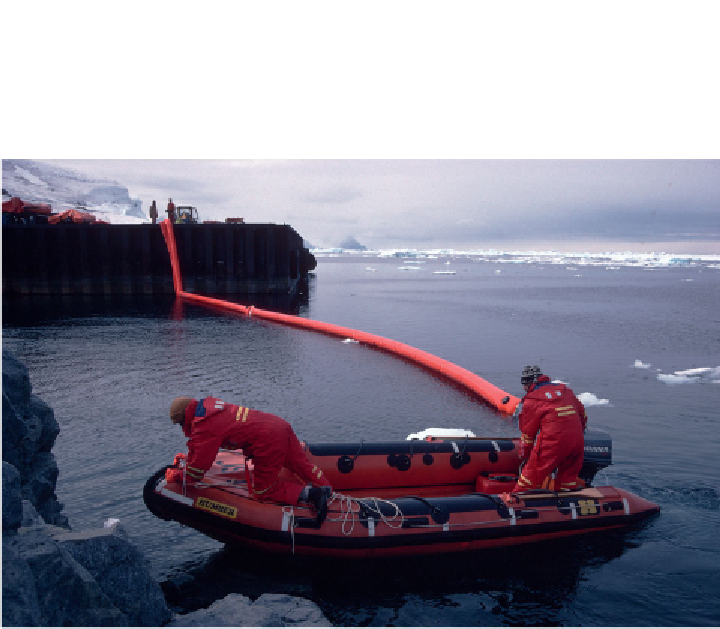Geoscience Reference
In-Depth Information
Figure 10.11
Marine pollution exercise, deploying an oil boom at Rothera Research Station.
(Credit: Peter Bucktrout , BAS)
effective response action in case of environmental emergencies, or be liable for its
cost. It will enter into force once approved by all the ATCPs.
The Protocol established the Committee for Environmental Protection (CEP) as an
expert advisory body to provideadviceandformulaterecommendationstotheATCM
in connection with the implementation of the Environment Protocol. The CEP meets
every year in conjunction with the ATCM. Its workload has grown so fast that it has
dif
culties handling all the issues during the week it meets. It has therefore developed a
multi-year work plan assigning full consideration of some issues to different years.
The adoption of the Environmental Protocol and the establishment of CEP in 1998
brought a new body of participants into the ATCMs, namely environmental managers.
This has led to a clari
cation of roles and improved the interplay between SCAR and the
ATCM. SCAR has always had, and still has, the role of giving scienti
cadvicetothe
ATCMs, both through its own initiative, or by answering questions posed by the
ATCM through SCAR's national representatives. This could be on any issue requiring
knowledge of Antarctica, but increasingly over the years the questions dealt with the
environment, especially related to protected areas. This led to SCAR establishing a
Group of Specialists on Environmental Affairs and Conservation (GOSEAC) in 1988.
Ably
filled with scientists of deep Antarctic knowledge, GOSEAC nevertheless
frequently handled questions which were not so much science as management,
sometimes causing friction within the Antarctic
'
family
'
. Any blurring of roles in this



Search WWH ::

Custom Search